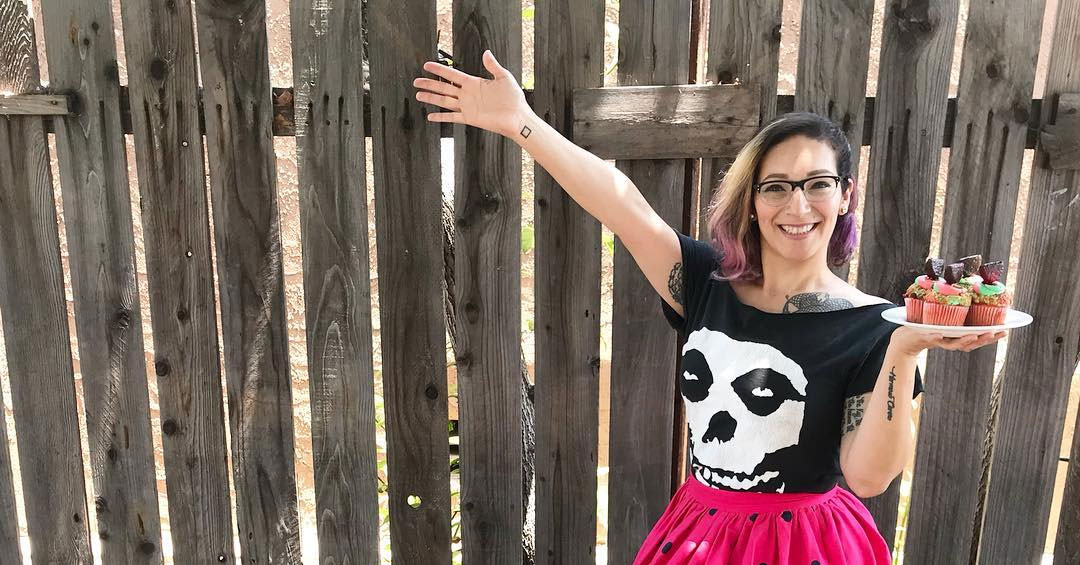‘Border Kid’ Combines Cultures — and Creates Jobs — Through Cupcakes
Date: September 17, 2017
When Karina Jiménez was laid off from an office job in 2011, she decided to jump into entrepreneurship with a niche dessert business called Viva Los Cupcakes. She had already been selling cupcakes as a side business at bars, parties, concerts, and art openings in Los Angeles, a 30-minute driver from her home in La Habra, California. But as she developed it further, she realized she would need an innovative product to set her apart. “I thought, I should be doing something different, something that no one else was doing,” she says. “That’s how I came up with my niche: I started doing Mexican flavors.”

Every month, Jiménez rolls out a new flavor, like “Bolillo con Mantequilla y Azúcar,” a vanilla cupcake with butter-cream frosting topped by a miniature piece of Mexican bolillo bread. Today she employs a team of seven and sells her confections in bakeries and grocery stores across the United States. She caters weddings, birthdays, and corporate events, and her clients include the likes of Nickelodeon Studios and Cameron Pictures. Viva Los Cupcakes is now successful enough that Jiménez is looking to open a flagship location in the greater Los Angeles area.
Small businesses like hers were instrumental in helping the U.S. economy rebound after the Great Recession. And immigrants, who are almost twice as likely to start a business than are U.S.-born residents, were particularly influential. Between 1996 and 2011, the the rate at which immigrants founded new businesses grew by 50 percent, while the rate at which U.S.-born entrepreneurs did so actually declined, by 10 percent. Today, there are 2.9 million immigrant entrepreneurs in the United States. Combined they generate $65.5 billion in business income, money that gets redistributed throughout the U.S. economy.
To Jiménez, immigration policy is personal, especially as it relates to the border. She grew up as a “border kid” with dual United States and Mexican citizenship. “My family has always been back-and-forth,” Jiménez says, noting that crossing the border today barely resembles what it was decades ago, when her family and friends more easily commuted to work in the United States from Mexico. Her grandfather and uncles worked in the United States in the 1950s under the Bracero program, a labor agreement that allowed Mexicans to work here with protections such as guaranteed minimum wage. Until it ended in 1964, it was the largest foreign-worker program in American history and brought a total of 5 million laborers to the United States. “When my grandfather worked in the United States in the 1950s, you could just walk up to border security and get a border-security card,” Jiménez says. This influx of Mexican workers helped keep American farms running both during and after World War II.
Immigration and migration are a part of American history.
“I always call myself a border person because I am part of the border community,” Jimenez says. “We travel back and forth with life, family, friends, and businesses on both sides.” To her, it is important that people are able to cross, since tourism impacts both the U.S. and Mexico’s economies. Immigration reform, she says, should consider the ability of both migrant workers and tourists to enter and leave both countries. “Immigration and migration are a part of American history,” Jiménez says. “Right now, with everything that is going off on, shutting down the borders would be shutting off a big part of what the United States is.”
